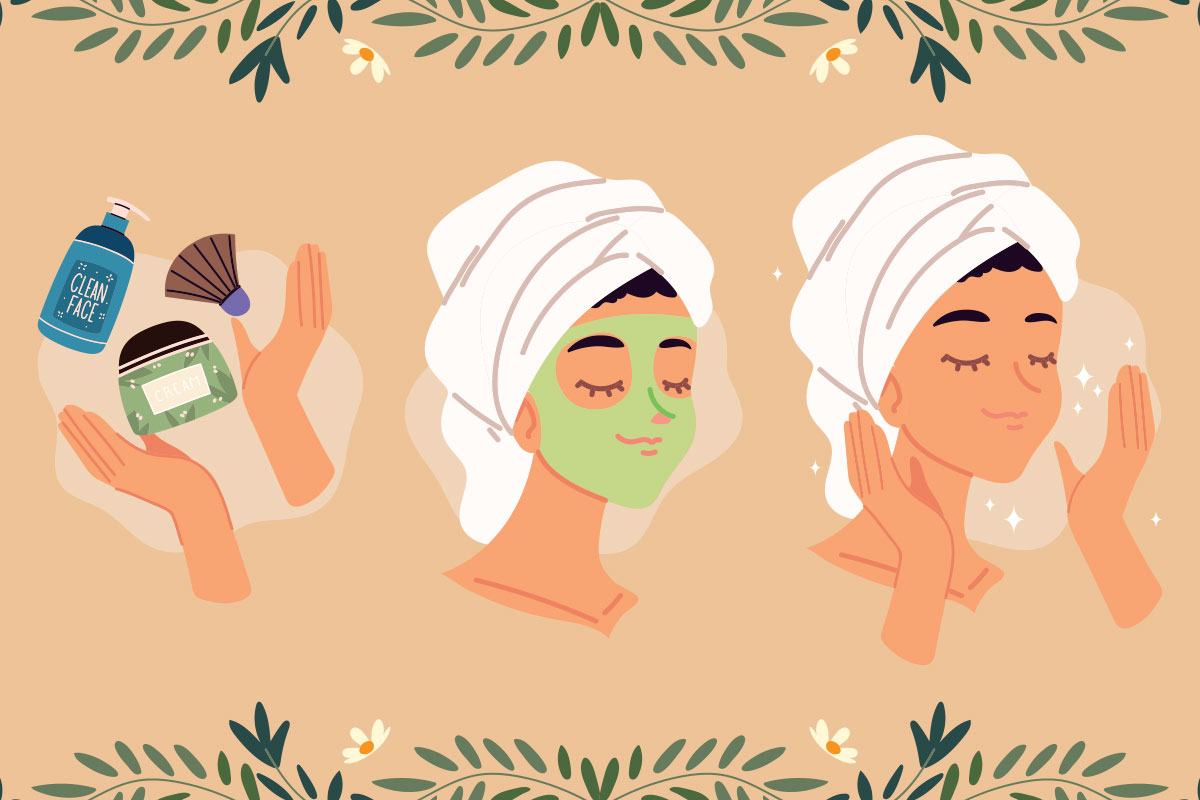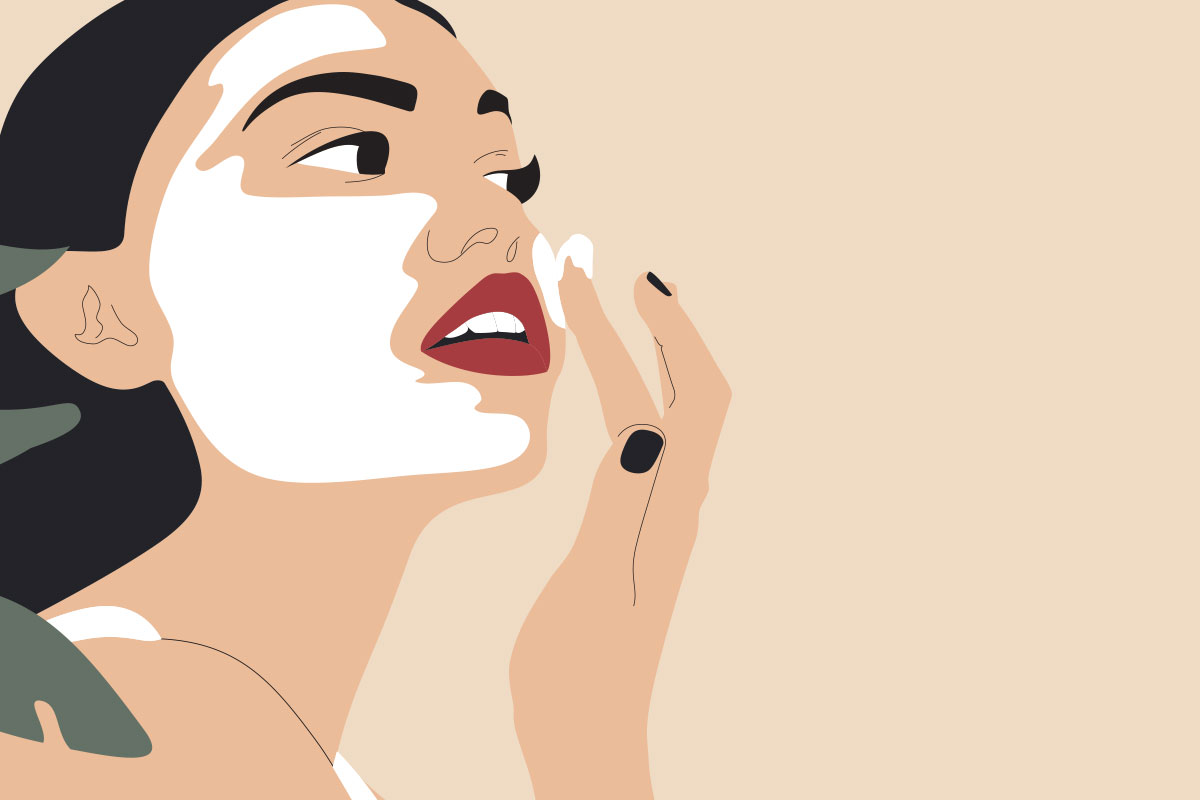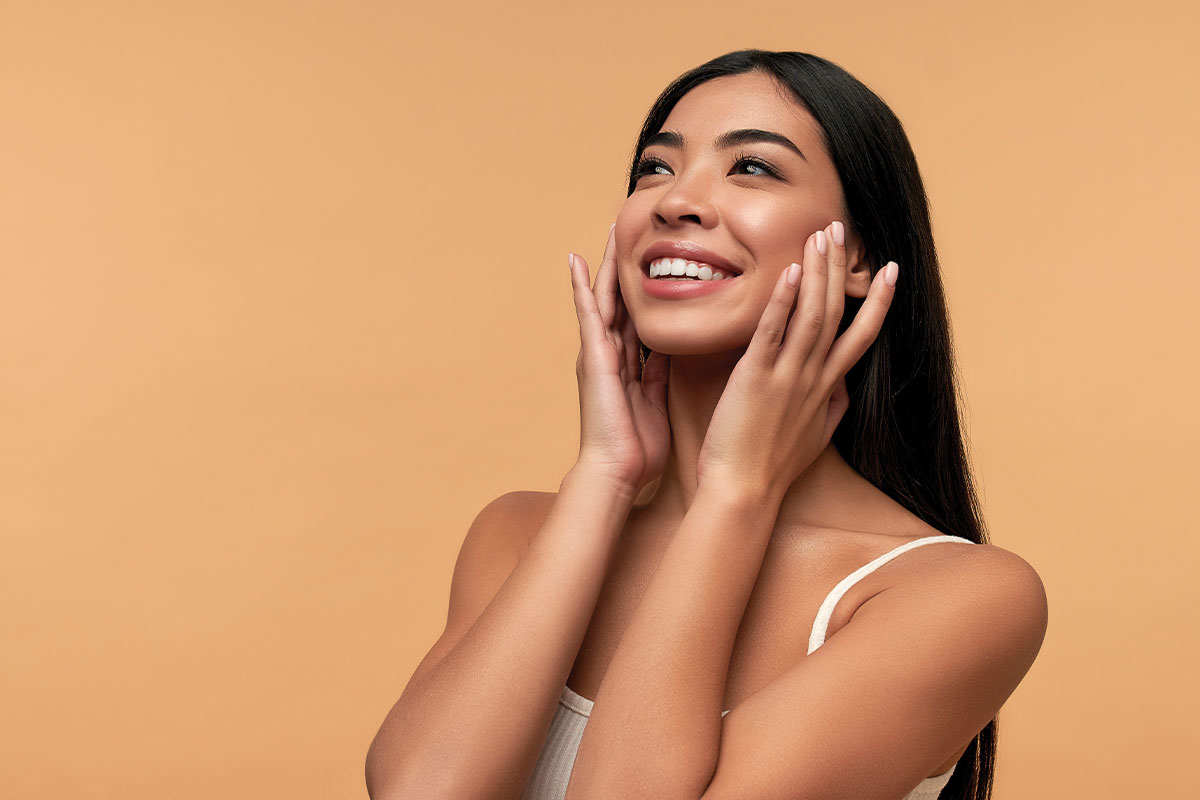Skin care. It may be one simple phrase, but it represents a complex, multi-billion-dollar industry consisting of countless products, services, and specialists. And it’s growing every year.
For those who spend any time on social media — particularly TikTok and Instagram — it’s unlikely a day goes by where they don’t see a video or photo in their feed hawking a trendy “life-changing” skin care product or clever beauty hack. There are dozens of stories appearing every day devoted to the topic. Almost everywhere you look are experts — some highly trained and others self-proclaimed — offering advice for what you should and shouldn’t be doing to take care of your skin.
For many, skin care is dizzying. And just as some finally feel like they have the hang of it, boom — they enter a new stage of life full of new concerns and plenty of questions about what’s next.
Skin cancer ranks among those concerns. It is the most common form of cancer in the U.S., according to the Centers for Disease Control and Prevention. The National Cancer Institute estimated the number of new skin cancer cases in the U.S. in 2022 reached 99,780 and that 7,650 people died. In Virginia, the American Cancer Society estimates that 2,360 cases of melanoma, a type of skin cancer, will be reported in 2023, making it the fifth most prevalent cancer in the state.
Thankfully, caring for your skin doesn’t have to be complicated. NoVA dermatologists, aestheticians, and plastic surgeons break down what you need to know to keep your skin healthy and looking good at every age.
The Early Years
These are the years to begin establishing good habits that children can take with them throughout their lives — most importantly, sun protection.
“Skin care should start with children,” says Dr. Brenda Dintiman, a Vienna-based dermatologist. She recommends parents use sunscreen on their children to prevent sun damage, which can lead to skin cancer as an adult.
Dr. Al Damavandy, of District Dermatology in McLean, says that some children can benefit from a skin care routine shortly after birth, like post-bath moisturizing.
“This is most commonly apparent with children who have atopic dermatitis — the formal medical terminology for eczema — to reduce itch, appearance of rash, and the additional associated risks of superinfection and sleep disturbance,” Damavandy says. “In fact, clinical studies have even shown that routine moisturizer use in children with genetic risk factors for atopic dermatitis may help prevent the development of the condition.”

The Teens
Skin care in the teen years is primarily about preventing and treating acne, says Dr. Lily Talakoub of McLean & Potomac Dermatology & Skincare Center.
Teen acne is often hormonal, but Talakoub says these are also the years when teens start to use makeup primers and setting sprays, as well as hair products. If their skin and hair aren’t clean when they go to bed, their pores can clog, causing breakouts.
In an attempt to get rid of their acne, teens often use products that end up drying out their skin, Talakoub says.
“Don’t overdo it,” she says. “Don’t think just because you have acne that your skin is too oily.”
Demi Williams, an aesthetician in Alexandria, loves working with teenage clients because she, too, dealt with acne at that age. She cautions against using harsh prescription medications that lead to dry or irritated skin.
For “simple teenage acne,” a consistent skin care regimen of the right products for their skin type can do wonders. More severe, painful acne — such as cystic acne — likely will require medical intervention by a dermatologist, but an aesthetician can still help with possible side effects from acne medication.
Overall, Damavandy says teens should focus on the fundamentals of a good skin care routine: cleansing (but not over-cleansing), moisturizing, and sun protection.
Less is also more. Dintiman often sees teenagers using too many products, along with products touting natural ingredients, such as tea tree oil, rosemary, and lavender, that can produce rashes.
“Natural is not always more gentle,” she says.
The 20s
Consider the 20s a coming of age. Williams says this is the decade where people step into their skin type — whether it be dry, normal, or oily. They begin to establish a skin care routine focused on maintaining their good skin and delaying the signs of aging.
“Skin care becomes really important in the 20s,” Talakoub echoes. “It’s the age of prevention. You want to do things now before it’s too late.”
This age group should consider seeing a skin care professional in person to learn about their skin, head to toe.
“Everyone should know their skin type,” says Williams. This is especially relevant in an age with so many skin care trends going viral on social media.
Williams recalls the “slugging” trend from a few years ago where people would cover their faces with occlusives, such as Aquaphor or Vaseline, to trap in moisture. Several of her oily-skinned clients came to her seeking help with breakouts after trying it.
“Just because Susie does it doesn’t mean you can,” Williams jokes.
Another good practice is to begin routine skin cancer screenings with a dermatologist because melanoma is among the more common forms of cancer that affect adults, particularly women younger than 30, according to the American Cancer Society.
Damavandy says there’s no harm in seeing a dermatologist for a total-body skin exam so a doctor can look for atypical or potentially harmful skin growths and set a personalized baseline for future evaluations.
People in their 20s should be wearing SPF “all the time,” says Talakoub. She also suggests adding antioxidants, vitamin C, and mild retinol to the routine. Those using the products should make sure to include the neck and chest, which sometimes are the first areas to show signs of aging.
To help prevent some of that aging, Tysons plastic surgeon Dr. Munique Maia adds that the 20s are an increasingly popular age to start neurotoxin treatments like Botox or “baby Botox” — smaller doses injected into targeted areas — to prevent wrinkles.
The 30s
The 30s are the period when some people start to want to turn back the clock, or at least pause it for a little while.
“We want Botox. We want lifts. We want peels,” says Williams, explaining that she especially sees these types of requests among people who didn’t take preventative measures in their 20s. “Now [they’re] dealing with hyperpigmentation. [They’re] dealing with all these sunspots.”
Addressing fine lines and wrinkles becomes a priority. At this stage, skin care professionals say it may be time to consider adding cosmetic treatments to a skin care routine. Those treatments may include microneedling, which treats acne scarring, shrinks pores, and builds collagen.
“Radiofrequency microneedling is a wonderful treatment to stimulate collagen and treat scarring,” says Dintiman, adding that she uses this treatment on patients into their 40s, too. “[It] also creates tightening of the skin, especially along the jawline for jowls.”

The 40s and 50s
Talakoub calls the years in your 40s and 50s the “age of treating.”
It’s a time when people should begin ramping up their skin care as their skin starts to get drier and lose collagen. Because people’s skin no longer has the oil that it did in their 20s, Talakoub suggests using a gentle, oil-based cleanser.
Williams says the main concerns of her patients at this age are skin elasticity and brightness, so medical spas — med spas for short — can be an effective option for corrective treatments with instant results. Med spas offer nonsurgical treatments, including Botox injections, dermal fillers, microdermabrasion, and laser skin resurfacing.
Others turn to plastic surgeons, like Maia, for more intensive “facial rejuvenation” procedures such as face-lifts and neck lifts. Fat grafting, a procedure that adds plumpness back to sagging or sunken skin, is common, Maia says.
60s and Beyond
Once people reach their 60s, they seem to diverge into two groups: those who embrace age and all the wrinkles that come with it, and those who embark on the “age of rebuilding,” as Talakoub puts it.
In the age of rebuilding, they’re putting more fillers under the skin, lifting it, pulling it back with threads, and using more aggressive resurfacing lasers.
But for those who take the other path, Talakoub says skin care routines essentially come full circle, looking very similar to the routines people ideally would have followed in their 20s.
That means hydrating and protecting the skin, and doing things to calm it.
“My clientele that come in [at this age] just want to be pampered. They’re not worried about correcting. They are used to their skin,” says Williams. “They just want a healthy glow.”
Achieving that healthy glow can be difficult, as many people in this age group experience increased dryness. According to Damavandy, most can benefit from less frequent, cooler showers to combat dry, and potentially itchy, skin. He suggests showering no more than once daily or even once every other day.
These decades also see more instances of skin cancers, so annual evaluations are crucial.
“They should be on the lookout for new skin lesions that are growing, changing, tender to touch, stand out from others, bleed spontaneously, fail to heal, do not resolve after two weeks, or have a sharp, gritty textural quality,” says Damavandy. “Unfortunately, many skin cancers present far more subtly than this and require the expert eye of a board-certified dermatologist for detection and diagnosis.”
Skin Care Is a Lifelong Journey
Damavandy sums up skin care at every age, saying: “The goals of any skin care regimen should include reducing damage from sunlight and other environmental factors, reducing a tendency toward acne and/or rosacea, managing moisture levels, and reversing signs of aging.
“Depending on the age of the patient, the level of emphasis placed on these goals can change,” he adds. “Skin care is a lifelong journey, but it doesn’t have to be complicated, costly, or time-consuming.”
This story originally ran in Northern Virginia Magazine’s April issue. For more stories like this, subscribe to our monthly magazine.


